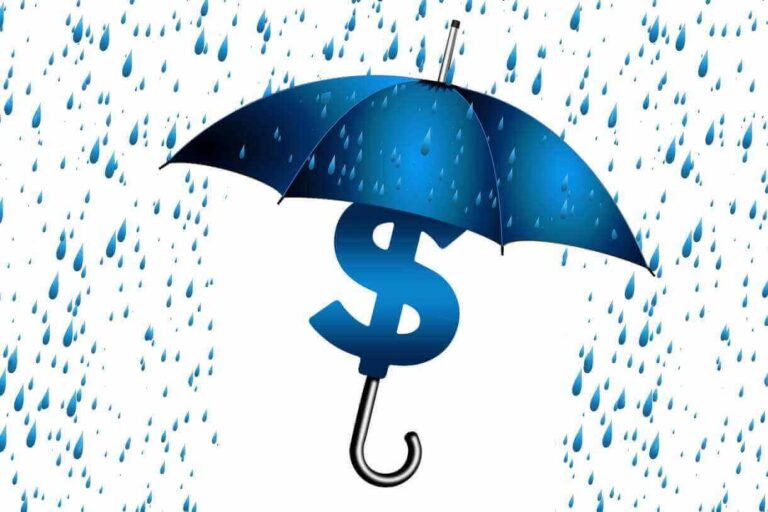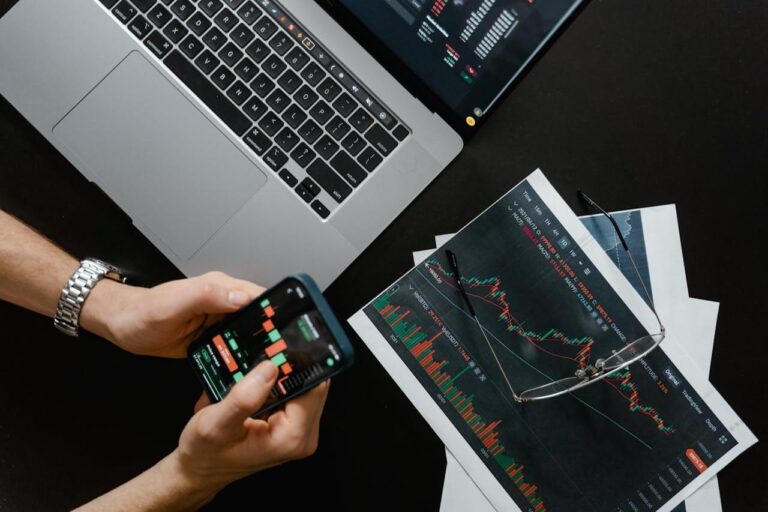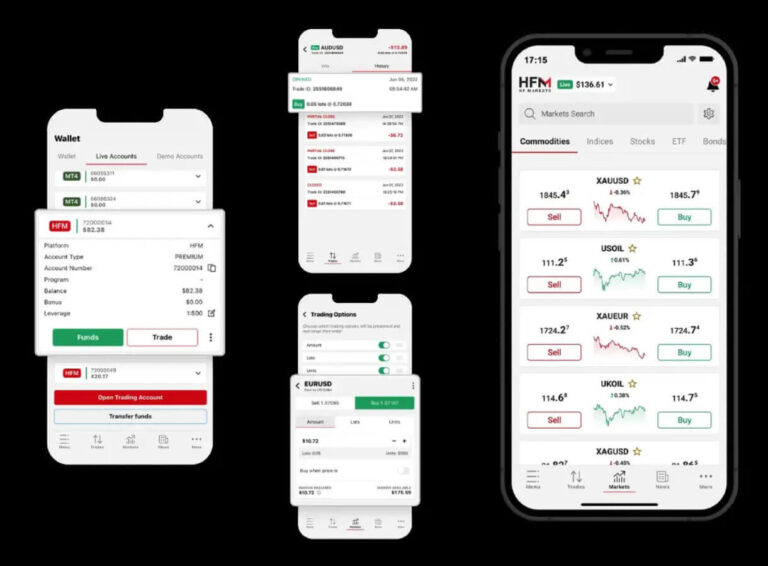How to Use Negative Balance Protection in Forex Trading
Not sure what negative balance protection does exactly? Here is everything you need to know about this useful service for Forex traders.

Negative balance protection (NBP) in Forex trading is a feature that stops your trading account from losing all of its balance from a bad trade and further getting you into debt. It is a service offered by select brokers in certain jurisdictions. The number one broker offering this feature is Exness.
The reason for negative balance protection is because market volatility can get out of hand, forcing prices to go strongly against you and without enough market liquidity for your broker to honor your stop loss in time. If this happens to you, then only a negative balance protection service can save you from incurring debt.
This article explores the mechanics of negative balance protection, as well as the pros and cons of using it. So, if you are serious about remaining a profitable trader in the long-term, then this guide is for you.
What Is Negative Balance Protection?
Negative Balance Protection is a promise from a broker that you as a trader will not lose more money trading the markets than the balance in your account. There is no standard method of how it works, so each broker is free to implement safety guards into their trading platform.
Safeguards such as margin calls and dynamic leverage already prevent most of the risks associated with a trader potentially blowing his entire account and going into a negative balance. However, there are times when unexpected market events can make it impossible for these safeguards to work, so the broker still has to offer a guarantee to potential and current customers in order to win their business. One such event happened in 2015.
An Example Of Negative Balance
A good example to showcase the need for negative balance protection is the Swiss Franc crash from 2015. At the time, the Swiss Franc (CHF) was pegged to the Euro–with the Eurozone being Switzerland’s largest trading partner. Exports from Switzerland were suffering since a few years prior and exporters complained that the Swiss Franc was getting too strong.
The entire fiasco started as a result of too much money being brought into Switzerland since the the 2008 financial crisis. So, the Swiss National Bank had to find a solution to the problem. They started with negative interest payments on the money parked in Switzerland, so banks started charging customers interest on their deposits, the exact opposite of paying the customers interest. Still, more money came in.
On 15 January 2015, the Swiss National Bank decided to stop trying to devalue the Swiss Franc, so it removed its CHF1.20 peg against the Euro without warning. This sent the entire markets into a frenzy, as those trying to close their losing positions found no buyers. It was a catastrophic event for traders and brokers alike, with hundreds of millions of dollars lost without warning. Some brokers like FXCM even went bankrupt overnight and had to be rescued with a $300 million lifeline. Others like Citibank reportedly lost $150 million.
Although these losses were incurred by the traders who now had negative balances on their accounts, it was still the brokers who had to settle the debts with other financial institutions. So, it was left to the brokers to either demand payments from their customers to cover their financial burden and risk losing them or to offer negative balance protection as a way to retain customers and lure new ones.
Pros & Cons of NBP
Although generally a good thing overall, NBP or Negative Balance protection still comes with its pros and cons, so it is important that you know them. Here are the major ones.
Pros:
- Trust In Broker: A broker that offers you negative balance protection appears more trustworthy because it actually is, as opposed to those who try to cheat their customers at every point of the way. Hence, negative balance protection is a mark of a good broker.
- Peace of Mind: You are more relaxed and at peace when you are trading on a platform with negative balance protection because you know there won’t be any unexpected surprises. NBP brings peace of mind to your trading, which enables you to better focus on your strategy and execution.
- Better Account Protection: In practical terms, a trading account with negative balance protection is better protected than one without. Not only is it not possible to loose all the money in your account and even incur debt, you are almost certainly not getting cheated by the broker as well.
Cons:
- Excessive Trader Risks: Knowing that your account balance is in good hands can tempt a trader to take excessive risks which go against the principles of responsible behavior that is expected of every good trader. Of course, when such behaviors become frequent, you can expect a negative impact on the trader’s long-term success.
- Higher Trading Costs: Another downside to negative balance protection is that since it is a service being offered by a broker to its customers, the broker still has to find ways to get the customers to pay for the service. Hence, there is a tendency for a broker offering NBP to charge higher trading costs than those that don’t offer it, even when these higher costs are relatively minimal.
- Limited Opportunities: Brokers are also forced to increase their margin requirements to help prevent negative account balances and by doing so, they reduce the potential leverage that a trader could use. Although most brokers enable these leverage limitations during periods of expected high market volatility to protect the trader, it is still the trader who loses out of potential profit opportunities because if he wanted to take some of those trades, he wouldn’t have enough margin to enter the market.
How To Use Negative Balance Protection
If you are now convinced of the positive advantages of negative balance protection and you want want to make sure that you are using it in your trading activities, then here are a few tips to follow.
- Choice of Broker: The first point to keep in mind is that negative balance protection is offered by brokers to their customers. So, if you want NBP, then you should make sure that a broker offers this service before signing up. We recommend that you use Exness. If you are already with a broker, then make sure they offer it. Else, you may want to consider finding another broker that offers the service.
- Countries & Regulators: Another point of consideration is your country of residence and the relevant regulatory bodies. For instance, the EU, the UK, and Australia all support brokers offering negative balance protection to their customers, while the United States and Japan prohibit retail Forex brokers from offering such protections.
Other Ways To Protect Your Account
There are still other ways to protect your account and manage your overall trading risk. These range from diversifying your portfolio to controlling your position sizes. Here is a quick look:
- Stop Loss: Every trade you make will not be profitable, some will be losers. So, it’s always in your best interest to add a stop-loss to every trade because this way, you prevent your account from a sudden and steep loss of balance.
- Position Sizing: Trading with the right number of lots is equally important. Your lot size and stop loss are the two metrics that produce your maximum risk per trade. So, always make sure to calculate your lot sizes properly for your account balance. There are also free position size calculators out there that you download and use if you are finding it difficult to manually calculate.
- Diversification: Another way of mitigating risk on your account is by diversifying your trades. For instance, in place of betting 2% of your account on one trade, you could bet 1% on one currency pair and another 1% on another currency pair, thereby diversifying the risk.
- Be Wary of Leverage: The simple truth is that leverage is a double-edged sword. It can help you to make huge gains and equally help you to quickly wreck your account, especially if you don’t know what you are doing. So, always be careful with how much leverage you are using. To be safe, anything above 1:100 should worry you.
- Strategy: This is perhaps the most important tool for guarding your account balance. If your strategy produces lots of losing trades, then you will sooner or later blow that account. So, it pays to have a strategy with a high or acceptable wining rate for best results.
- Money Management: Using a good risk/reward ratio will also keep your account balance higher than if you don’t. The wisdom here is that it is better to risk $1 trying to make $3 than to risk $1 trying to make just $1.
Best Brokers For Negative Balance Protection
If you are looking for a good broker with negative balance protection, then keep in mind that not all brokers offer this feature. Exness is the leading broker with this feature and they were the ones that made it quite popular before others started adopting the same. Otjers like IC Markets, XM.com and RoboForex now offer it too.
Frequently Asked Questions
The following are some of the most frequently asked questions about negative balance protection in Forex trading.
Q: Does negative balance protection come with a guarantee?
A: Yes, the negative balance protection service is by itself, the guarantee that your trading account will never lose more money than the balance you put into it.
Q: Can I trade Forex with a zero balance account?
A: No, you cannot trade Forex with a $0 account balance because you need some money as margin to open a trading position.
Q: What is a margin call?
A: Margin call is a message from your broker when your account balance reaches a certain low percentage during a bad trade. It is meant to alert you about the low balance in your account that might get totally wiped off if the market continues to go against you. In this case, you will either choose to close the trade, add more money to your account, or just let it run and see what happens.
Q: Can I trade Forex without leverage or margin?
A: Yes, you can trade Forex without leverage, but you will need a huge sum of money to make substantial profits. For instance, a broker might require a $3,500 margin to let you trade a standard contract of $100,000 nominal value and you may open and smoothly run such an account with $10,000. If you wanted to trade the $100,000 without leverage, however, then you will need at least $100,000 in account balance to open a single standard position.
Q: Do all Forex traders need negative balance protection?
A: Yes, all traders can benefit from negative balance protection because the truth remains that the markets can be unpredictable. So, you are never 100% sure that your stop-loss (if any) will be honored.
Conclusion
You have seen the advantages of negative balance protection and how your trading business can benefit from using brokers that offer the service. You have also seen the brokers listed above that you can check out for your trading needs. But if you are still undecided, then choose Exness.




